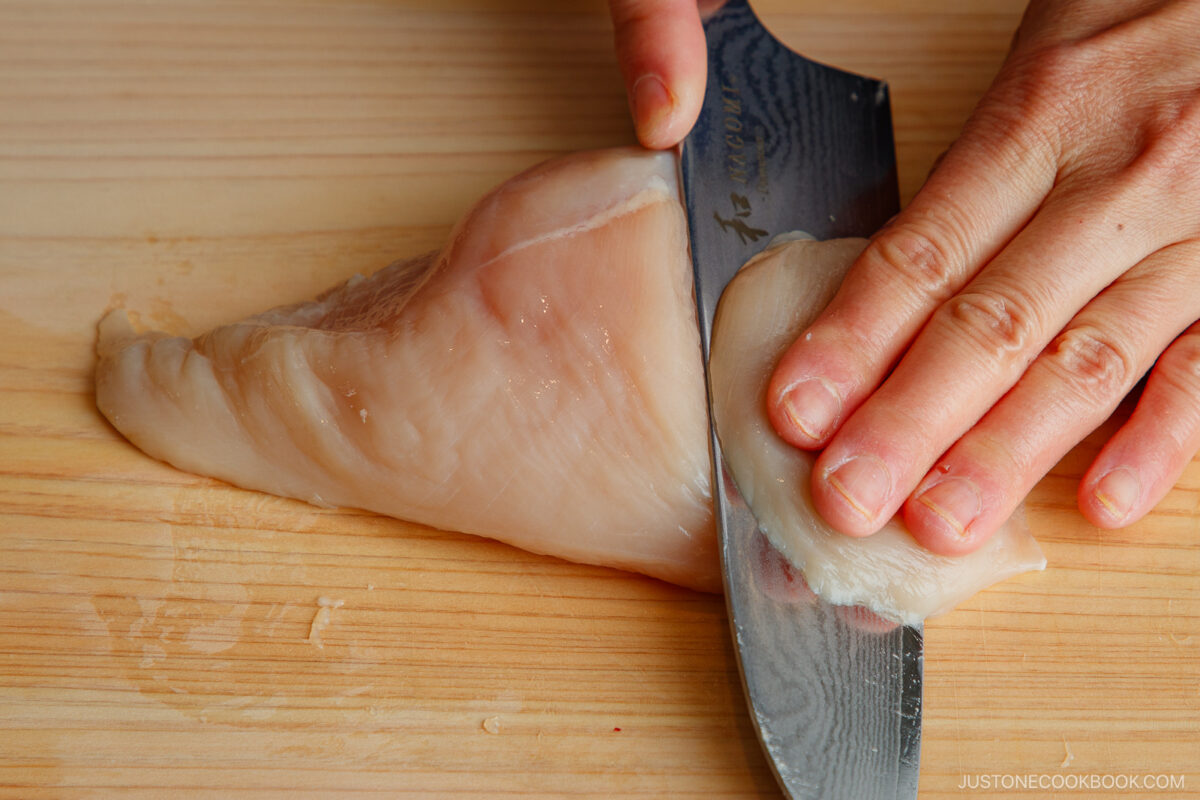Sogigiri: Slanted Slice Cutting Technique
Learn the sogigiri “slanted slice” cutting technique with this easy tutorial. This simple Japanese cutting method will help you create thin, flat slices of chicken and veggies that cook evenly in your favorite Japanese recipes.
To slice thin, flat pieces, we often use the sogigiri cutting technique in Japanese cooking. This simple method helps you cut meat and thick vegetables to an even thickness so they cook faster, consistently, and with better flavor. Here, I’ll teach you the sogigiri “slanted slice” cutting technique so you can add it to your repertoire of knife skills and culinary skills in your home kitchen.
Use the sogigiri cutting technique in my Oyakodon recipe, Japanese Chicken Curry recipe, and How to Cut Salmon into Japanese-style Fillets tutorial next!
What is Sogigiri?
Sogigiri (そぎ切り) is a Japanese cutting technique where we slice thick ingredients on a sharp diagonal. This slanted cut increases the surface area and creates thinner, flatter pieces—the word sogi means “to shave.” As a result, the ingredient cooks more evenly and absorbs seasonings better.

Why I Love Sogigiri: Slanted Slice Cutting Technique
- Promotes even cooking – Cutting to an even thickness helps cook each piece of your ingredient at the same rate, so nothing overcooks or undercooks.
- Foods absorb flavors better – The larger surface area allows chicken, pork, and fish to soak up more seasoning for improved taste.
- Speeds up cooking – More surface area means more contact with the hot pan’s surface or the simmering liquid, so the thin-sliced ingredients cook faster.
- Keeps proteins tender – By slicing sogigiri against the grain of chicken and pork, we cut the muscle fibers so the meat has a more tender texture.
- Creates elegant slices – For visual appeal, you can cut ingredients like shiitake mushrooms into flat, bite-sized pieces.
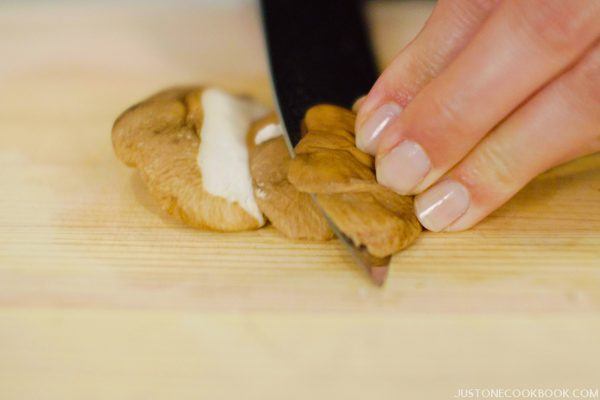
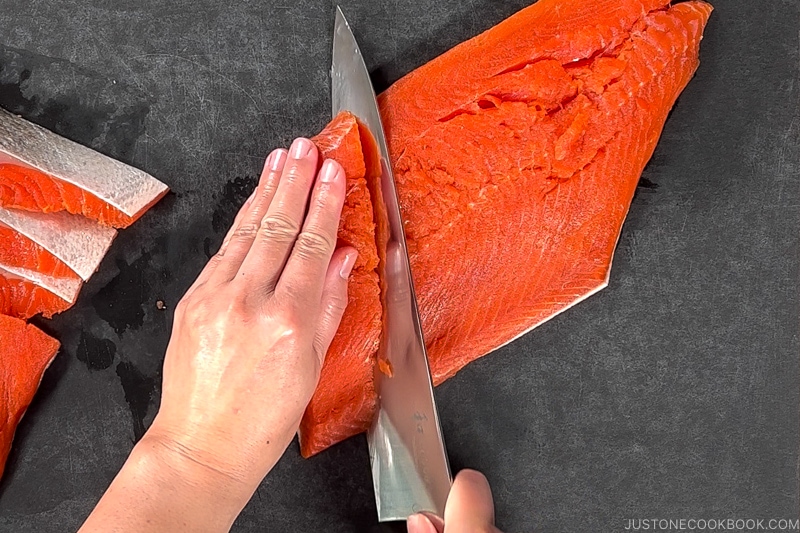
Types of Food for Sogigiri (Slanted Slice)
- Chicken breast
- Chicken thigh
- Chcken tender
- Pork loin
- Fish fillets
- Mushroom caps
- Various vegetables with thick parts, like napa cabbage
Find the printable recipe with measurements below.
Key Equipment
- sharp kitchen knife – I recommend a solid chef’s knife for most ingredients. I use a high-quality Nagomi Damascus Gyuto Chef Knife that you can find at JOC Goods. You could also use a nakiri knife (Japanese vegetable knife) for cutting veggies.
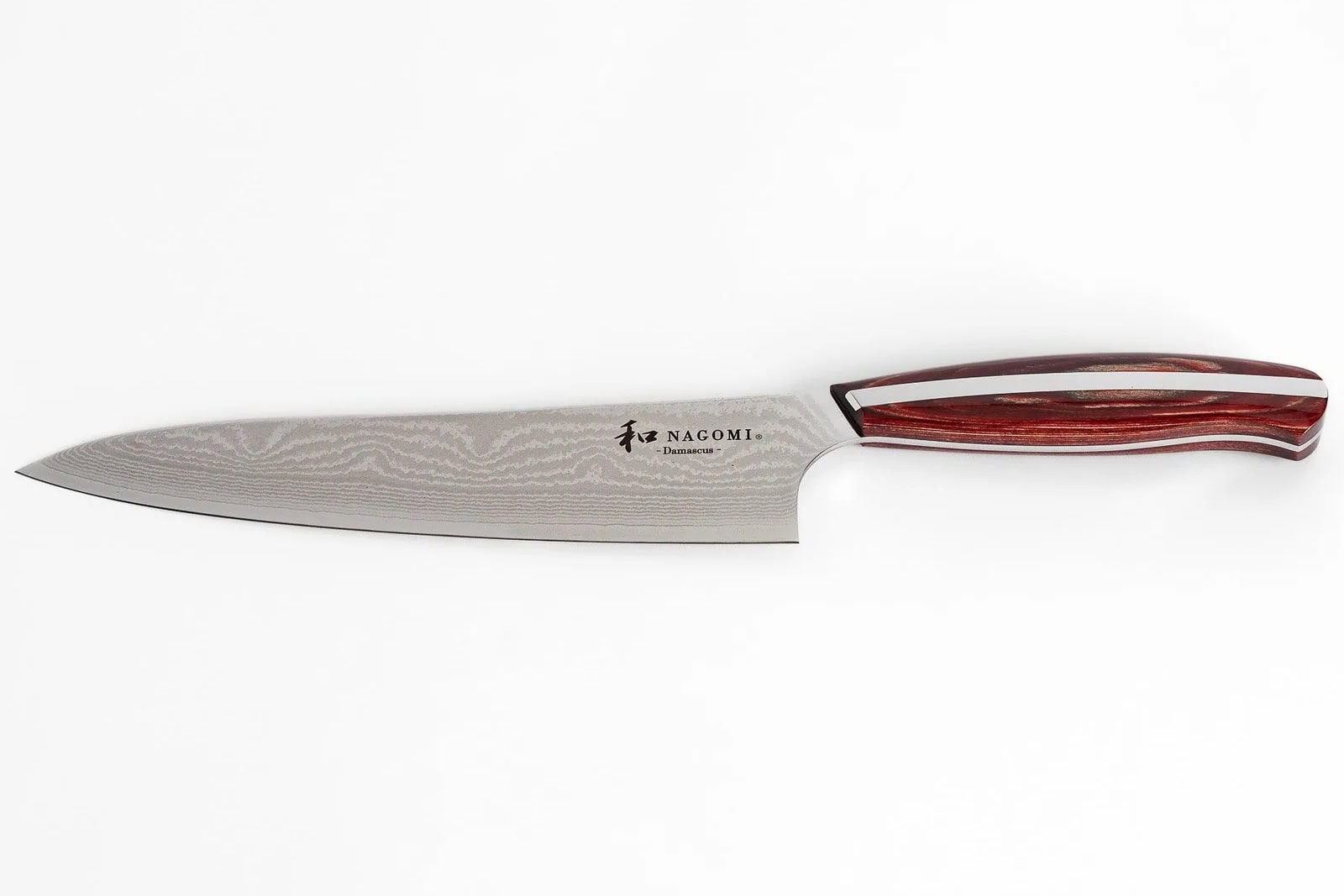
How to Make Sogigiri (Slanted Slice)
- Tilt your knife back 45 degrees or more. Start the cut with a forward motion, then pull the blade through to shave off a thin, diagonal piece. (To control the size of the piece, you can adjust the angle from 30 degrees to nearly parallel to the cutting board.)
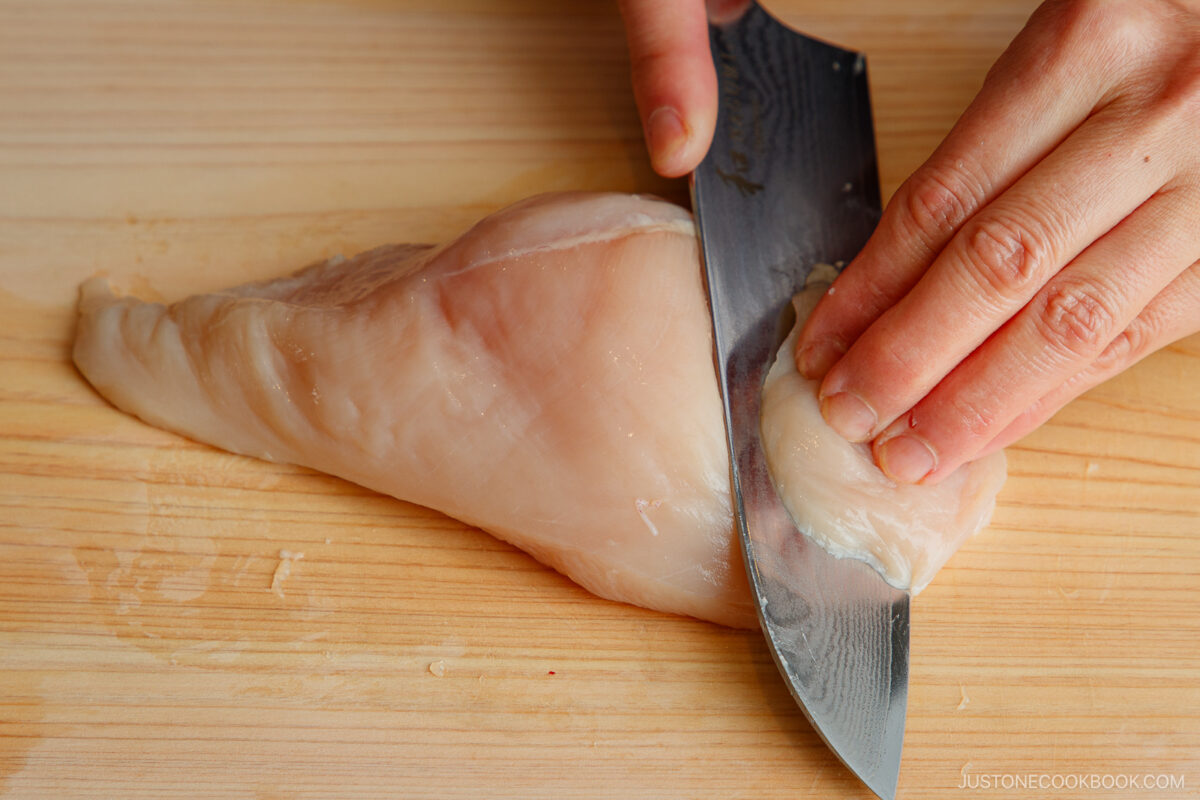
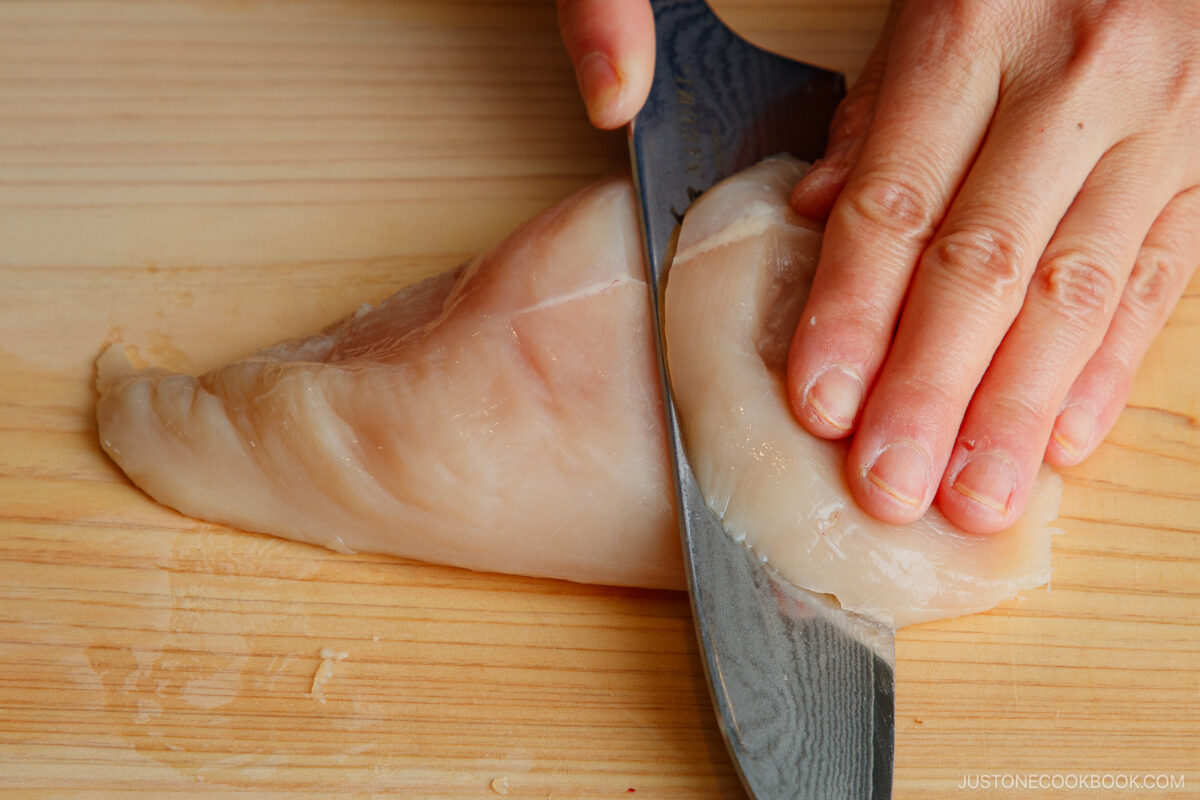
- Repeat these diagonal cuts while maintaining the same angle and thickness for uniform cuts.
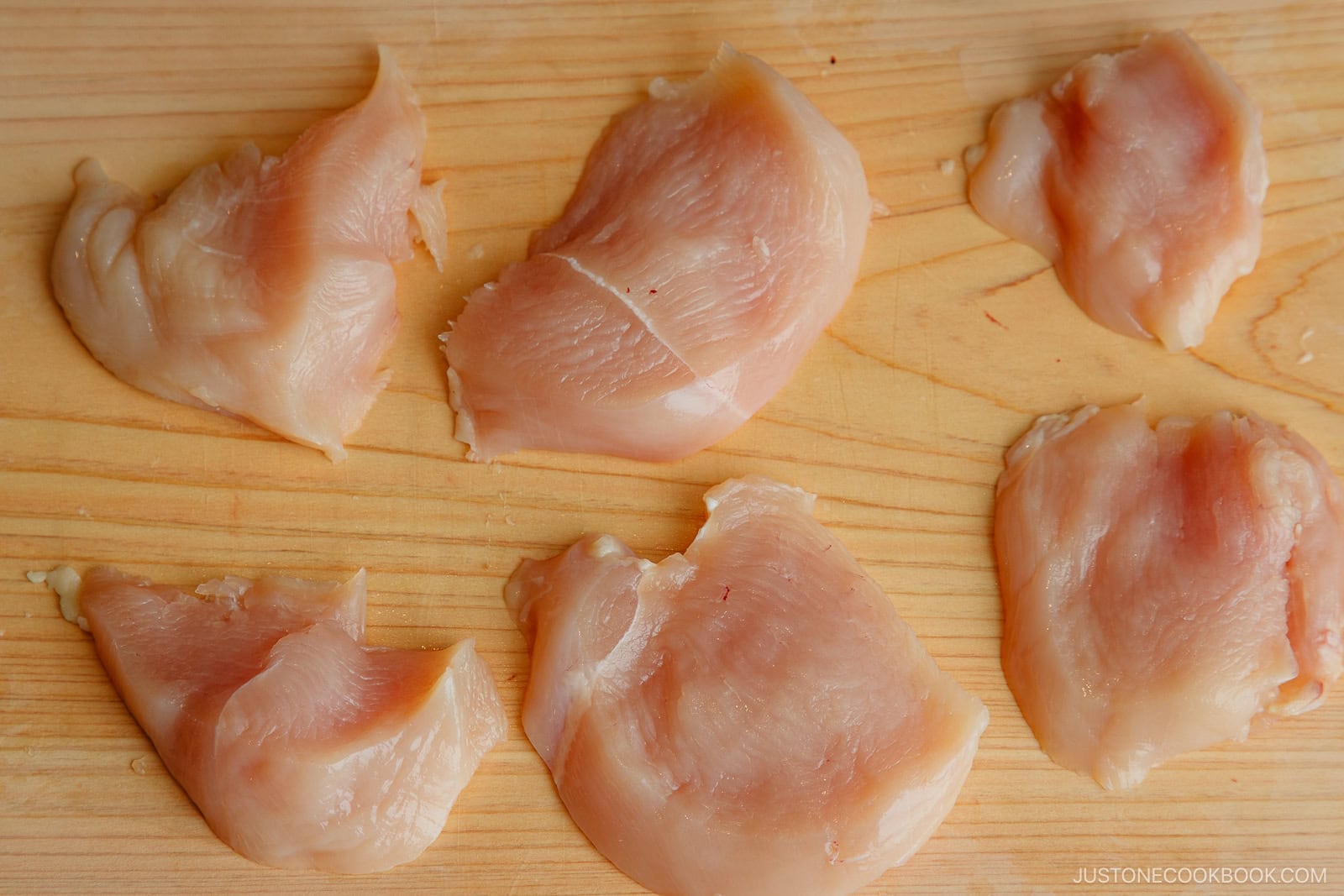
Nami’s Tips
- Adjust the angle of your knife. It’s a simple way to control the size of each cut—making it easy to create larger or smaller pieces. The angle can range from 30 degrees to nearly parallel to the cutting board.
- Use a smooth slicing motion. For clean cuts, try to shave off the piece in one pass. I push the knife forward to start the cut, then pull it through the ingredient to slice off the piece. Do not use a back-and-forth sawing motion, which can create a jagged surface and mash the meat, fish, mushrooms, or veggies you’re cutting.
- Slice proteins against the grain. When you look at the meat or fish fillet, you will see muscle fibers going in one direction. For neat slices, I recommend cutting sogigiri across this grain, not parallel to it. Also, cutting against the grain is the secret to a tender texture for pork, chicken, and other meats.
- Keep a sharp knife. I sharpen my Japanese chef’s knife regularly for safety and precision. This way, cutting is effortless and you’ll get very clean slices.
How to Use the Sogigiri: Slanted Slice Cutting Technique
Now that you know how to make sogigiri, you can use this knife technique to prep your ingredients for many kinds of traditional and modern Japanese dishes. Here are my favorite ways to use these flat, thin slices of proteins and veggies.
- In simmered dishes – Chikuzenni (Nishime)
- In stir-fries – Pan-Fried Curry Chicken
- In stews – Japanese Cream Stew
- In salads and soups – Miso Nikomi Udon


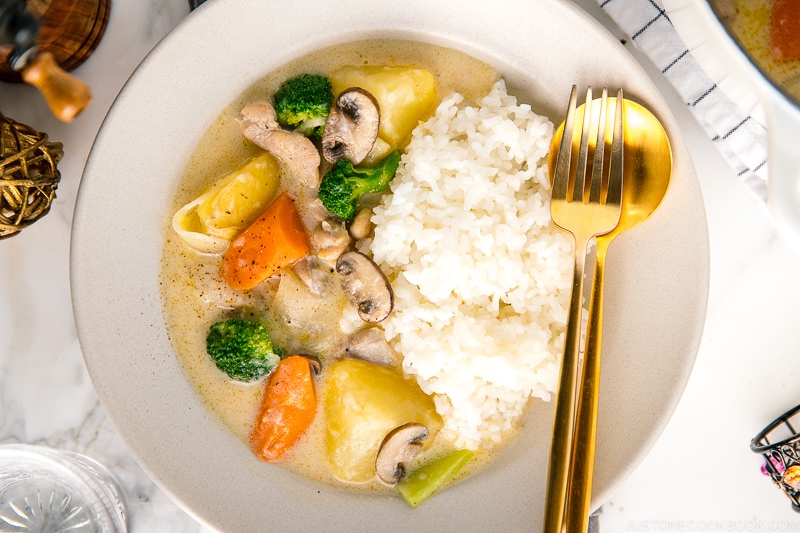
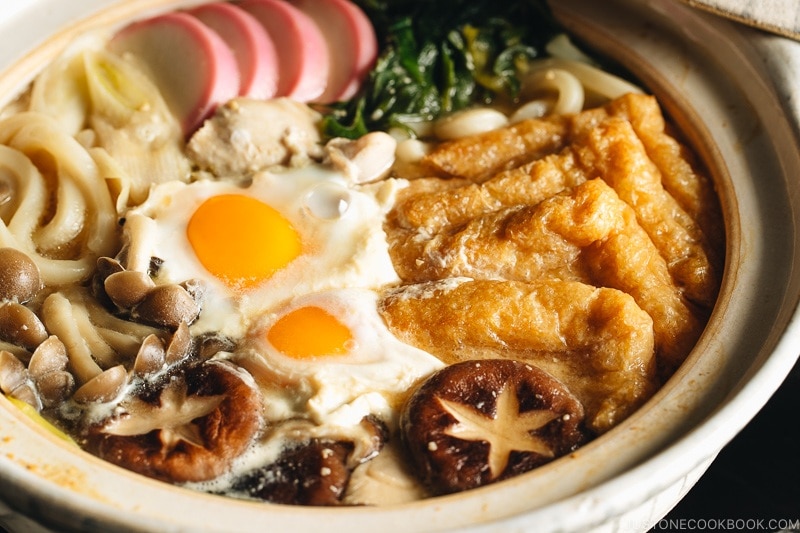
Frequently Asked Questions
What are other common Japanese cutting techniques besides sogigiri?
When preparing Japanese cuisine, I’ll use many different cutting techniques at home. Some unique Japanese cutting styles that I use in my daily home cooking include sogigiri or sogi-giri, rangiri (乱切り, random cut or random shape), hangetsu-giri (half-moon cut), zaku-kiri (rough chop), koguchigiri (小口切り, thin rounds), sasagaki (ささがき, shavings for burdock root), and various kazari-kiri (飾り切り, decorative cuts). In addition, I use many basic techniques are like usugiri (thin strips), hosogiri (thin slices), wa-giri or wagiri (輪切り, round cut), and sengiri (julienne cut).
With a little practice and patience, you can learn many of these culinary skills from my Japanese Cutting Techniques tutorial so they become second nature.
Can I use sogigiri to slice raw fish for sushi and sashimi?
We often cut sushi rolls or sashimi like tuna or snapper using a special sashimi knife called a sashimi bocho (刺身包丁) or yanagiba (柳刃). There are two basic cutting styles for cutting sashimi—hira-zukuri (平造り) and sogi-zukuri (そぎ造り). You can read more about them in my tutorial How to Slice and Plate Sashimi. Finally, one of the advanced techniques that a great sashimi master might use is the paperthin slicing called usu-zukuri.
Can I use sogigiri to cut tomato and onion?
For tomatoes and onions, we typically use the wedge cut called kushigatagiri (くし形切り).
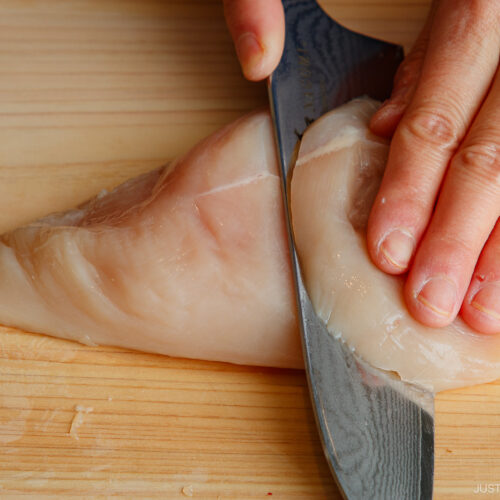
Sogigiri: Slanted Slice Cutting Technique
No ratings yet Learn the sogigiri slanted slice cutting technique with this easy tutorial. This simple Japanese cutting method will help you create thin, flat slices of chicken and veggies that cook evenly in your favorite Japanese recipes. Print Pin Prep Time: 5 minutes Total Time: 5 minutes Servings: 1
Ingredients 1x2x3x
- ▢ 1 boneless, skinless chicken breast (or chicken thigh, chicken tenders, pork loin, fish fillets, mushroom caps, and vegetables like napa cabbage with thick parts)
Japanese Ingredient Substitution: If you want substitutes for Japanese condiments and ingredients, click here. Cook ModePrevent your screen from going dark
Instructions
- Tilt your knife back 45 degrees or more. Start the cut with a forward motion, then pull the blade through to shave off a thin, diagonal piece. Nami's Tip: The angle can range from 30 degrees to nearly parallel to the cutting board.
![Japanese Cutting Techniques: Sogigiri]()
- You can adjust the size of pieces by changing the angle of the knife.
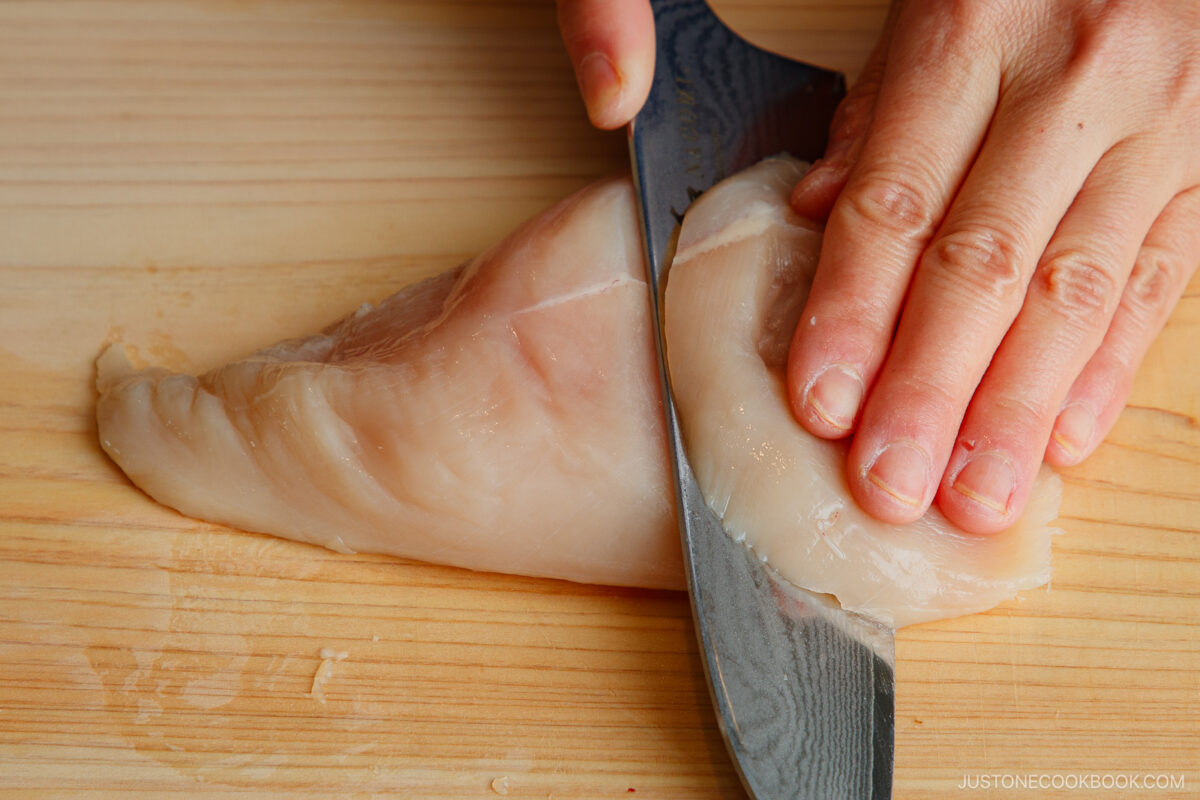
- Repeat while maintaining the same angle and thickness for uniform cuts.
![Japanese Cutting Techniques Sogigiri]()
Course: How toCuisine: JapaneseKeyword: cutting technique ©JustOneCookbook.com Content and photographs are copyright protected. Sharing of this recipe is both encouraged and appreciated. Copying and/or pasting full recipes to any website or social media is strictly prohibited. Please view my photo use policy here.
Editor’s Note: This post was originally published on December 26, 2012. It was updated and republished on June 9, 2025, with new images and more helpful information to guide your cooking.


